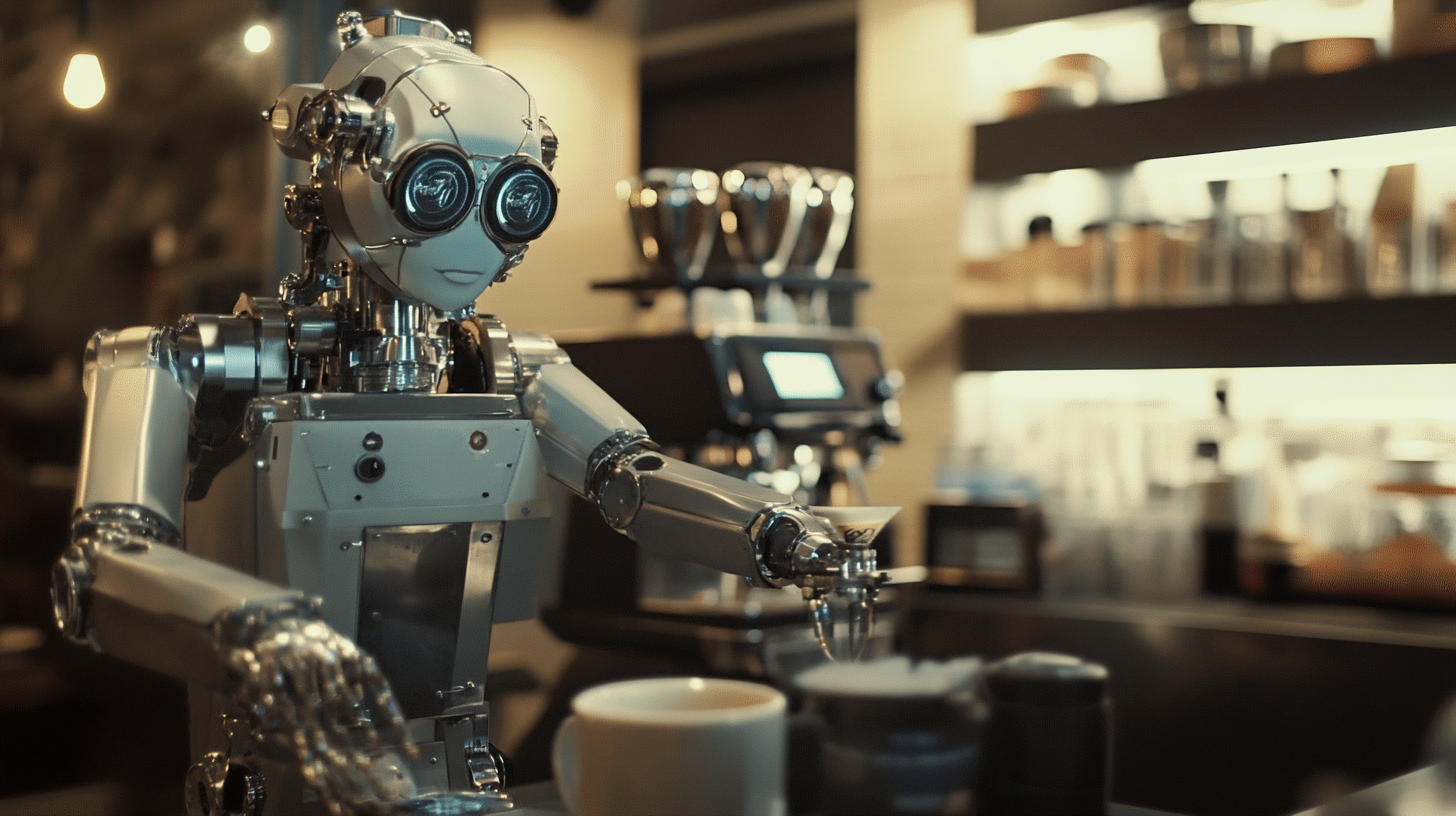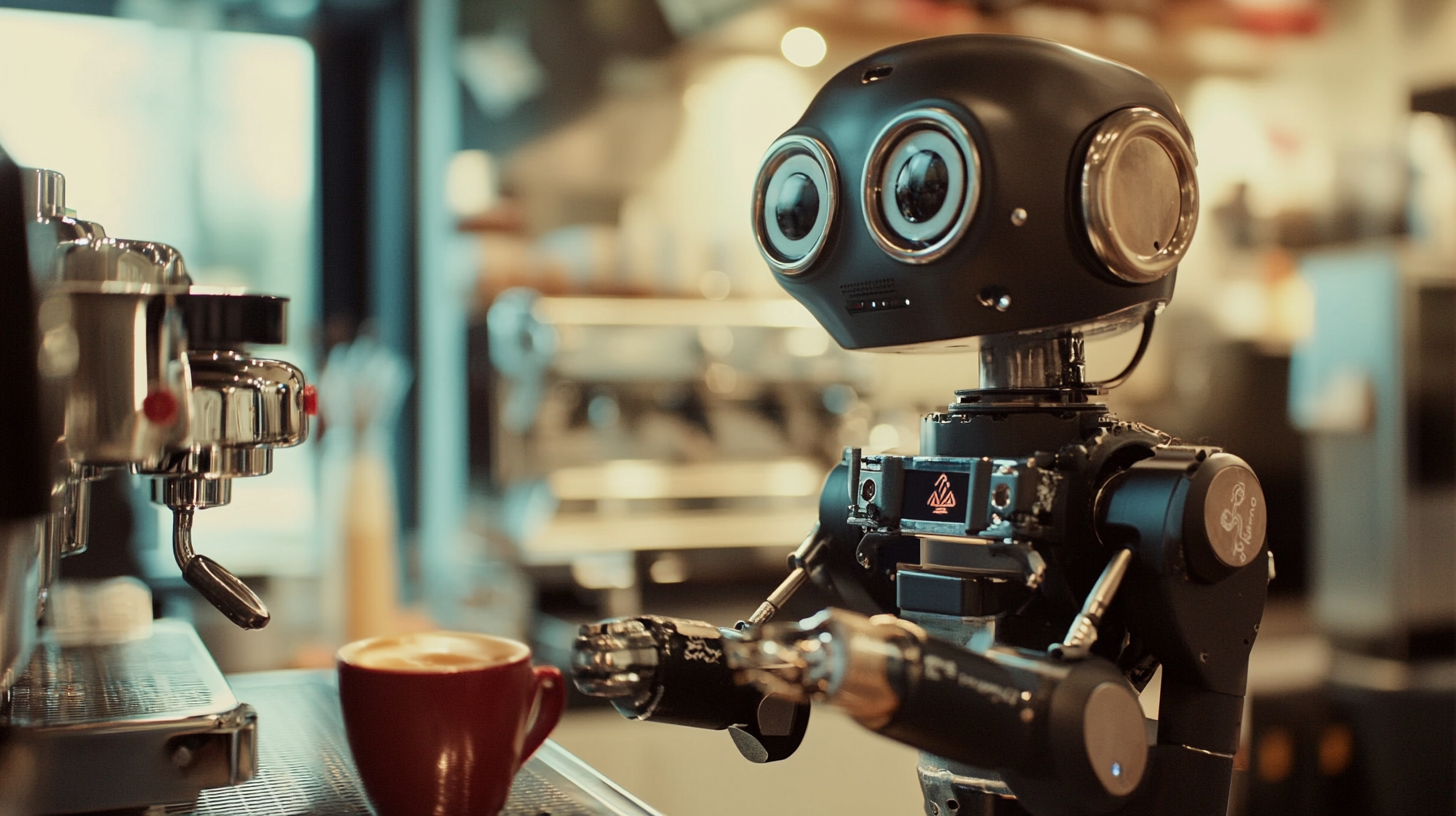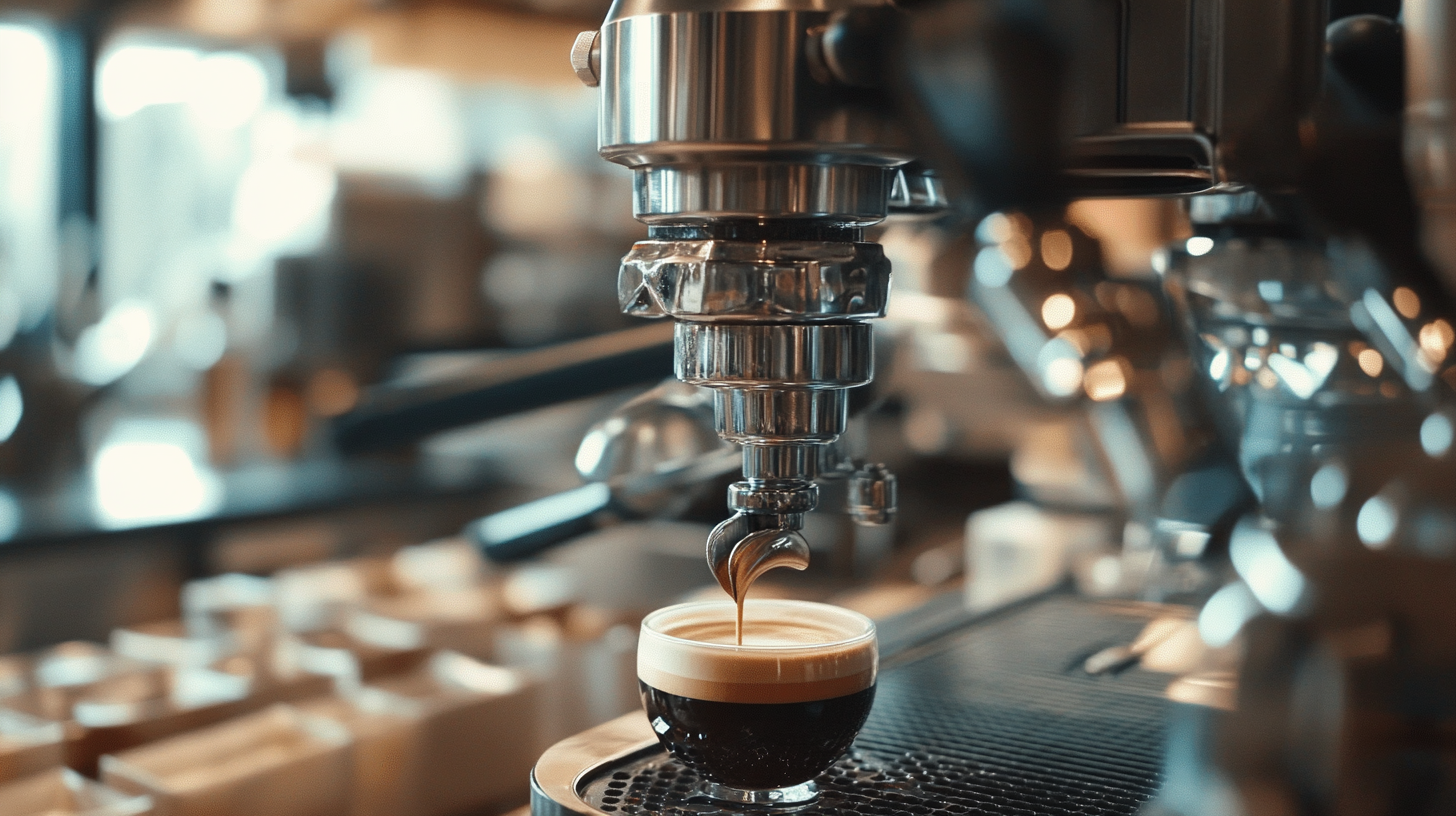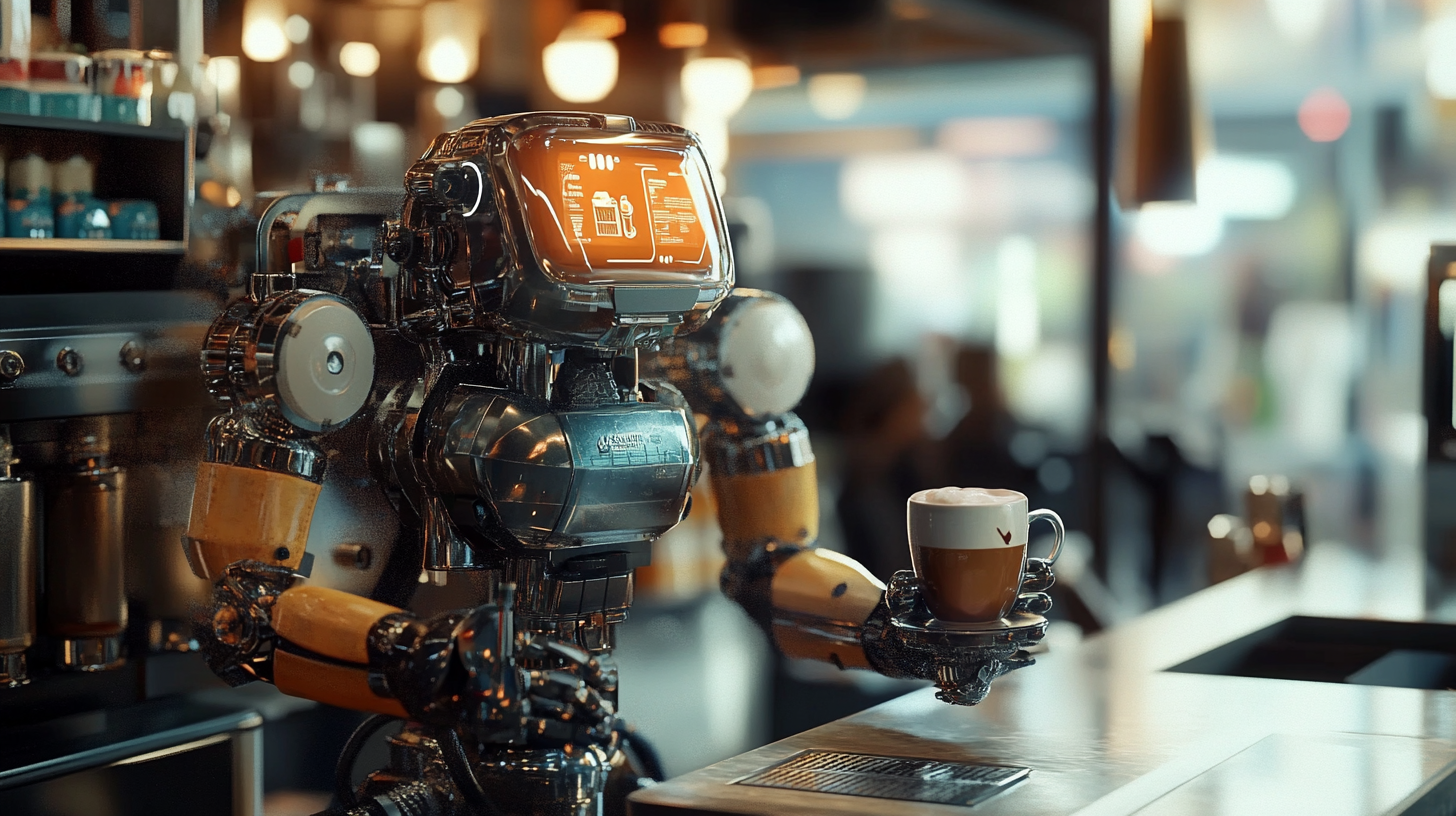Innovative Approaches for Sourcing the Ultimate Barista Bot
The coffee industry is rapidly changing, with technology becoming more and more relevant. Per Mordor Intelligence, the global coffee market is expected to reach USD 102.02 billion by 2026, registering a CAGR of 4.3%. While on the one hand, this growth is induced by the demand for high-quality coffee, on the other is the growing need for efficiency in service delivery. "Barista bots" present one dynamic solution-the latest heavy-duty automated machines geared toward mimicking the comparatively more delicate work done by humans behind a coffee bar.
These barista bots use super-intelligent AI and machine learning technologies to brew delightful coffee and offer personalized interaction with customers. According to a recent Business Insider study, about 30% of consumers would be willing to pay a premium for a technology-augmented coffee experience. This further suggests that barista bots hold the potential to transform customer service while increasing the efficiency of operations and enhancing the experience of drinking coffee. Through innovative channels of procurement of these advanced barista bots, businesses can take the lead in the competition, fulfilling their customers' changing tastes.

Understanding the Role of AI in Modern Coffee Making
Artificial intelligence has evoked great changes in coffee making, now turning coffee from merely a quencher into one of the most fashionable drinks. Indeed, today, coffee preparation would never be the same with the entry of much-anticipated machines like robotic baristas, which not only accelerated the speed of the coffee preparations but also elevated the quality to what were once reserved levels for professional human artisans. Nowadays, a robotic barista can tell you how much wonderfully it brews a visually stunning latte art, usually less than a minute, palace compared with seasoned professionals. In effect, this revolutionizes coffee artistry, not only for amateurs but, most importantly, for all coffee lovers, to experience salon-quality beverages at home or nearby local coffee shops. AI is very much central for modern coffee- make- it enables machines to learn through data and adapt the way they brew process according to individual preferences. By applying machine learning algorithms, these systems can bring out sophistication in their brewing style for particular flavors with the potential to enhance the art of brewing based on the type of beans and equipment employed. While coffee trends now go beyond caffeine fix into lifestyle, AI spearhead innovation and responsiveness to evolving market needs, particularly in emerging areas like China, where coffee culture is gaining traction rapidly. Apart from this, companies have tied up with universities and technology innovators to develop further the capabilities of these AI machines. As the market grows, consumer quality and expectation bring to coffee-making technology not just catching up but also leading in quality and consistency. Easily, the AI revolution in coffee making intends to transform how we relate to our favorite beverage to make it more accessible and enjoyable for all.

Essential Features to Consider When Designing a Barista Bot
Building a barista bot, as it turns out, involves some important aspects besides just being pleasant for a less experience consumer; these components must also be aimed at operational efficiency. As per a recent report from the National Coffee Association, over 60% of Americans have coffee every day, thus, representing a growing market for automated solutions in coffee-making. There is a need to have precision brewing technology incorporated within those technologies.
Therefore, this feature will enable the bot to brew just as all brew methods, from espresso to pour-over, which calls for wider customer appeal. Another major thing is user interface designing. According to UX study research with 70% of customers thinking usually about the others, there's another important aspect for an automatic interface--empower its understanding on being able to operate intuitively with touchscreens on barista robots.
They would then be able to make customized drinks and quickly go through the outlying options. Going mobile will be yet another trend that seems evident with the Allied Market Research report, which states that mobile coffee ordering will grow by 25% yearly. Last mentioned, the bot would lead advanced cleaning. It is noted in the study conducted by Specialty Coffee Association that cleanliness is among top three contributory factors to the satisfaction of customers.
An efficient self-cleaning system does not only make better coffee but also enhances productivity and saves on time as well as cost. Such are the things that would finally differentiate the barista bot in a competitive market.

Exploring Cutting-Edge Technologies for Enhanced Coffee Brewing
Coffee culture, by all means, is changing, and with it, the demand for the perfect barista bot is intensifying through technological advancement in the brewing process. Recent equipment innovation and the proliferation of smart coffee machines and automated brewing equipment are revitalizing how coffee is made. According to the Specialty Coffee Association report, the global coffee equipment market will be about USD 4.4 billion by 2027, proof that the demand for advanced brewing technologies is growing.
In this vein, shared coffee factories support wannabe baristas and entrepreneurs with accessible spaces for work. Located in Shanghai, the new 6,000-square-meter coffee roasting facility allows beginners to bring their coffee delight to life thanks to first-rate equipment and a cooperative space. Here, we can see the rise of community models through which coffee is demystifying access to brewing technology that was previously in the hands of the few.
The process of education remains vital to breeding future coffee professionals against a backdrop of digitalization and globalization. Programs that combine applied coffee training with technology-based training are crucial to satisfy market needs. Events such as the "2024 Kaohsiung City Coffee Festival," involving more than sixty local coffee and dessert vendors, exemplify coffee culture flourishing, thereby enhancing the need for highly skilled baristas conversant with contemporary brewing technologies.
As Union, which runs Dots Cupcakes, considers venturing into coffee retail, sharing expertise and incubation strategies will be indispensable for a smooth business operation. Inter-relationships or alliances in the coffee industry will be telling: Recent strategic pairings among key actors will underscore how technology and knowledge can be jointly leveraged to elevate the global coffee experience for consumers.

Sustainable Practices in the Development of Coffee Robots
To develop the ideal barista bot and simultaneously care for our intrinsically polluted planet is paramount. An exemplary mode of action is set in place: assisting eco-friendly determination with community kindness, exchanging trash for a coffee in island setups like that on Weizhou. This is a win-win situation eliminating garbage, enabling customer interaction through rewarding responsible behavior with a caffeine whip.
The unprecedented growth within the operations of robot cafes—featuring burgeon in value from $0.8 billion in 2022 to $3.5 billion by 2030—signals their immense potential. This ascendancy comes courtesy of robotic technology progress and high-magnitude consumer demand for the convenience-conferred upheld steadfast by quality. Nevertheless, with a focus on varied eco-friendly efforts as well as embracing local coffee sources and energy-efficient coffee bots, the environmental impact of coffee production and consumption could be hugely lessened anew.
The exponential appeal for sustainability in coffee production, such as farmers from Yunnan region who produce 98% of China's coffee, begs a call for supply chain integrity. The coffee robot industry has a window of opportunity to anticipate an eco-conscious-inherent strategy from 2024 to 2030, seeing that innovation balances its way to growing greenery.
User Experience: Creating a Friendly Interface for Barista Bots
It creates a friendly interface for the barista bots; hence a user-friendly experience is the main part for mass acceptance. The future of barista bots is rest in the automated technology of industries. The design hence needs to focus on an intuitive and accessible interface. A recent industry report states that a friendly interface increases engagement by as much as 40%. This establishes the premise that there must be seamless interaction between humans and technology, especially in a cafe, where efficiency is tied up with satisfaction.
One new thing to be done is a capture of natural language processing, with which the communication becomes seamless. However, the developments in NLP technologies have reduced the response times considerably, making the interaction very much human-like. Studies revealed that systems using NLP observed a 30% reduction in frustration among users and a better overall experience. A friendly conversational interface can guide the end users through the options, making ordering coffee similar to talking to an experienced barista.
The use of such things as appealing graphics and menus that read well will very much enhance user engagement. A great interface would not just be pretty but also show information at a glance. In a world where close to 75% of consumers would prefer to engage with an interface that is pleasing to the eye, the barista bots need to be designed to live up to that. Focus on both functionality and aesthetics in improving a user's experience, and thus the user will come back again to a satisfied customer.
